As part of RMIT PlaceLab’s ‘Cardigan Commons’ Research Project, this Toolkit has been developed as a playful way of bringing different – often confronting – voices together to have their say on what they’d like to do in public spaces. The methodology includes co-design dynamics, prompts for facilitators and useful ways to systematise and analyse the data that is captured. Our ‘blob’ modules, a visual and playful way of organising ideas in space, helps envision without the design constraint co-design methodologies often face.
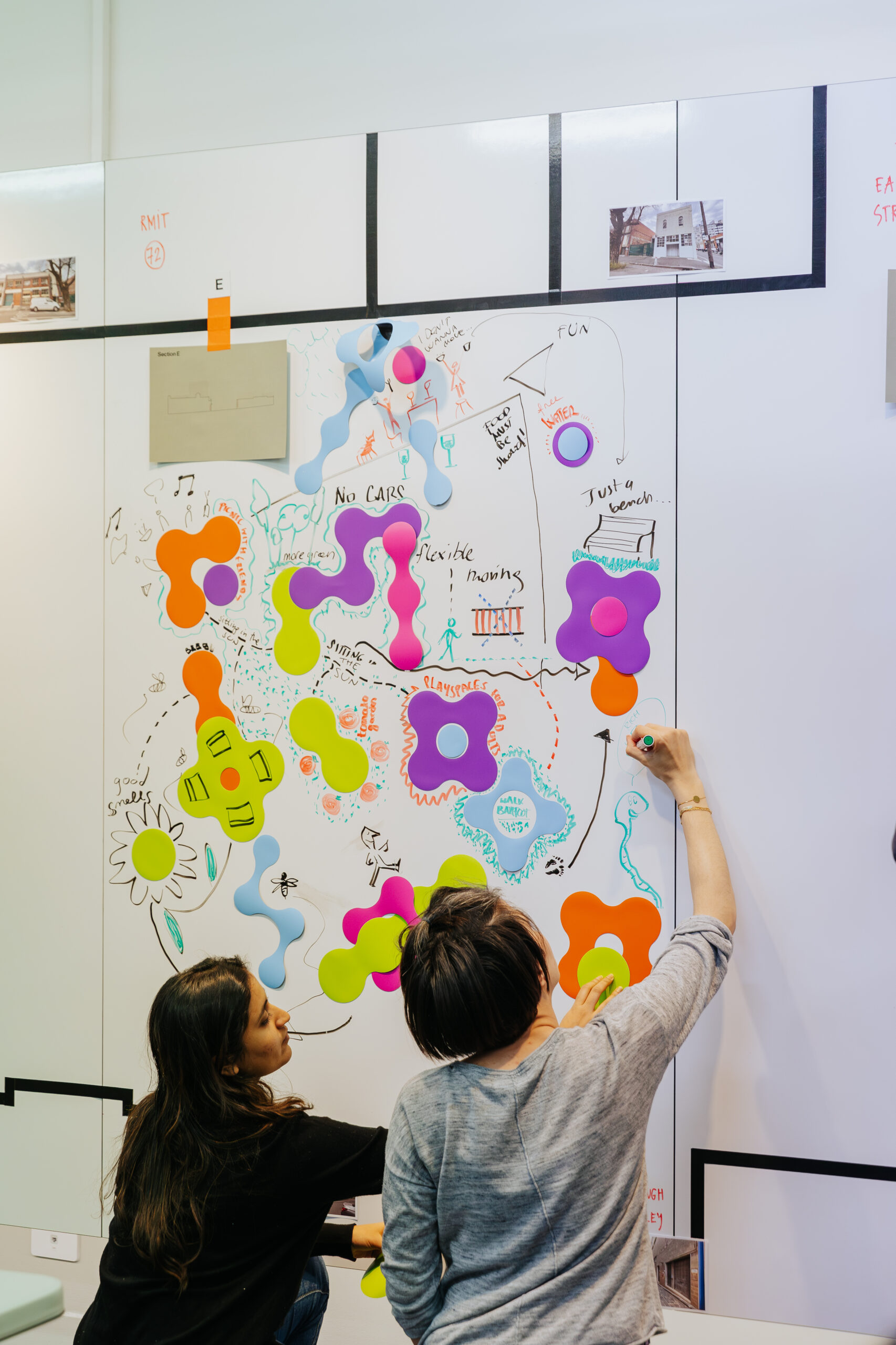
Testing out the ‘Street Codesign Toolkit’ at ‘Co-Lab for Cardigan‘. Photo by Dijana Risteska.
Objectives
- To join different community voices into a collaborative design experience
- To create a collaborative image of the desires of the members of the community
- To promote empathy between participants and with more-than-human organisms
I want to create my own CoDesign Workshop, where should I start?
Download Our Codesign Toolkit files!
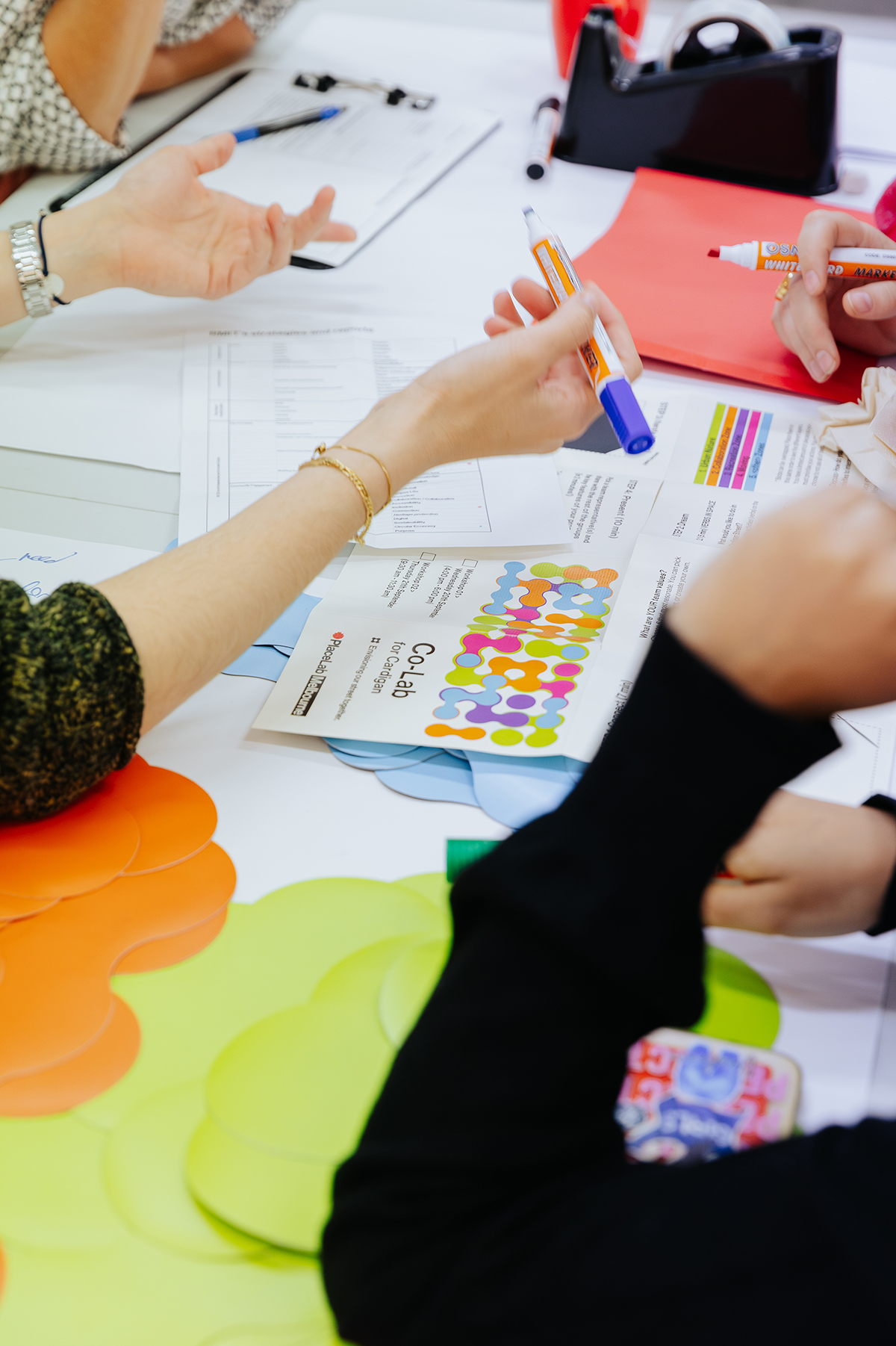
Testing out the ‘Street Codesign Toolkit’ at ‘Co-Lab for Cardigan‘. Photo by Dijana Risteska.
‘Co-Lab for Cardigan‘ was our chance to test out the ‘Codesign Toolkit’.
How did it go?
Over two days, 23 participants including representatives of the local community, RMIT academics, students and council, along with 7 facilitators, created the following image on our PlaceLab whiteboard, following the Codesign Toolkit Zine Instructions:
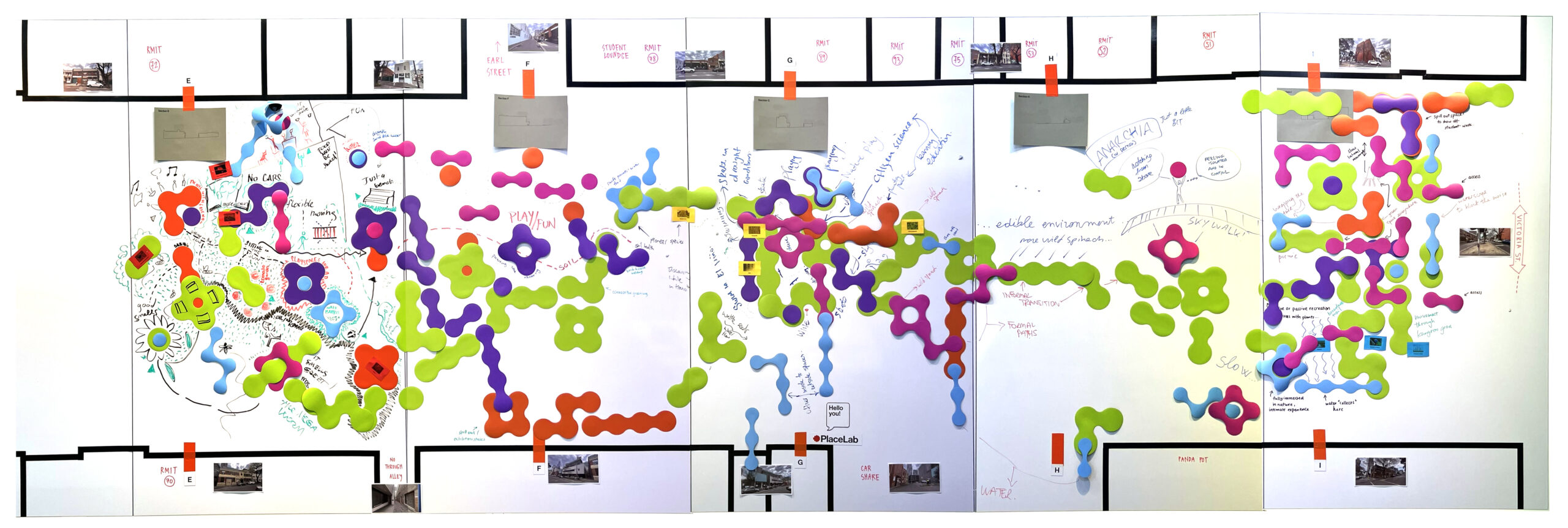
Day 1
Day 2
How did we analyse this image?
The ‘blob’ system helps communicate ideas and desires, without having the formal constraints from traditional design exercises. Nonetheless, this result is difficult to digest and translate into inputs for a street design attempt. The following notes are a step-through on how we managed to systematise and analyse this output.
Using Illustrator, we divided the information in the whiteboard between blobs and texts. The following image represents the blob magnets, their colour, position and overlap.

We built a matrix to identify the intensity of overlaps. The horizontal axis is the bottom blob and the vertical axis the blob that positioned above:
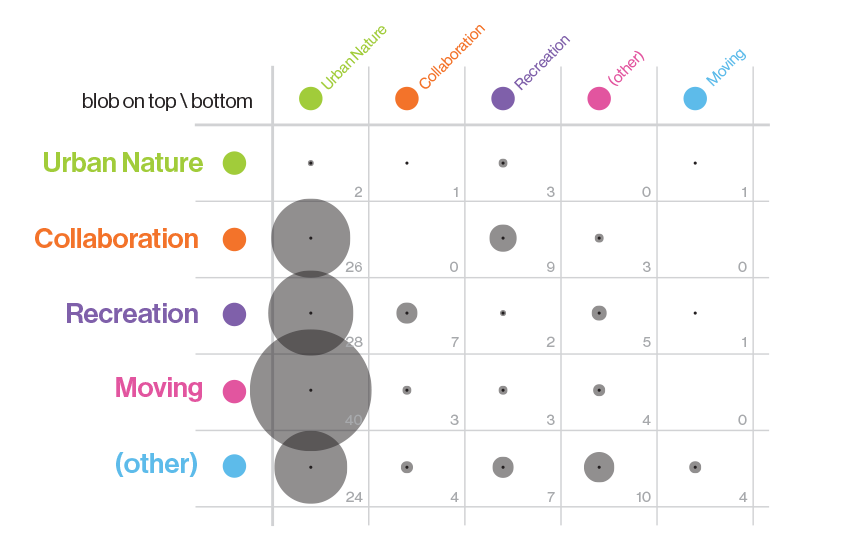
The base blob used the most was “Urban Nature”, with “Moving” (40) as the most popular action that overlapped: people want to move around in nature. They also want to collaborate (26) and have recreation zones (28) over a natural environment.
While the above diagrams are focused on quantifiable data, the texts that were linked to the blobs help with qualitative inputs. We divided these between:
a) Verbs and Actions,

b) Infrastructure and physical components of the street, and

c) Other qualities.

The coding system, and our Excel template for analysis, helped us quantify the amount of mentions per category. We know from this that 49% of the actions people want to do in public space, are things related to nature. Additionally, 40% of physical structures mentioned were in relation to recreational amenities.
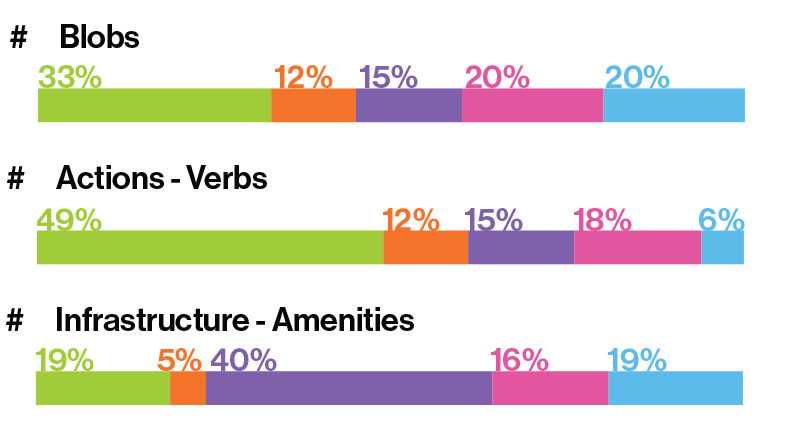
Workshop Observations
- In terms of mobility (pink blobs) every group linked these zones to either bicycle lanes and parking or pedestrian areas. Â None of them considered car lanes or car parking in their designs. There was a strong support to active mobility.
- Water Sensitive Urban Design (WSUD), Swimming, Paddling, Water play, Water collection, Rain Garden, Pools, Urban Lake and other water oriented platforms, where repeated themes amongst groups. Along with a range of Nature Based Solutions, the presence of water was highly valued.
- When groups where prompted to connect their section and discuss between teams, the way they connected was through nature: Water, Green spine, Canopy, Rain gardens, Edible environments, Soil health and Pioneer species, Connecting greenery.
- All the green blobs were used up quickly, which talks about a practical limitation of the methodology. The only group that did not use all their green blobs was because they decided to assign the “Other” zones as water sensitive urban design, meaning that their blue magnets also represent “urban nature”.
What was participants perception?
Following Co-Lab, we sent out experience surveys to hear about participantsâ perspectives.
- 100% of participants felt their voice was represented,
- 75% learned something new
- “I learnt about a great process and tool for communicating ideas, as a way to share a new vision for the Cardigan Street project.”
Further insights into the workshops feedback can be explored on our “Wild Streets” Zine.
This is the story of how our Codesign Toolkit was developed and tested out!
Potentially, it could serve as a precedent for a future community engagement strategy aimed at envisioning the future of Cardigan Street.
